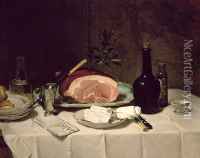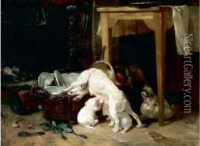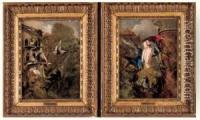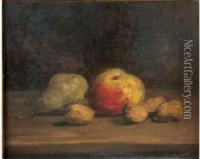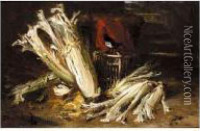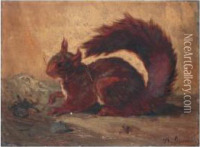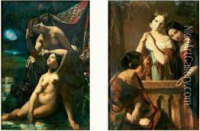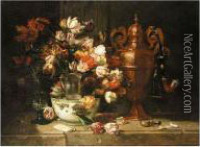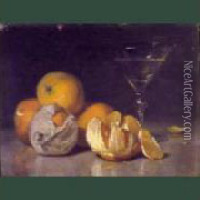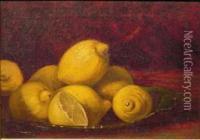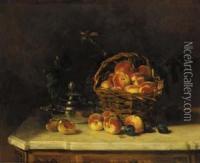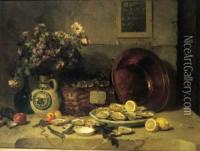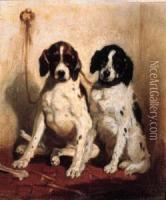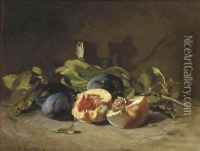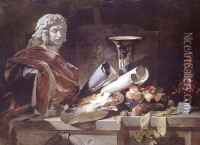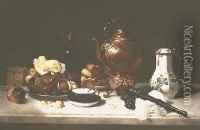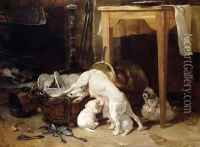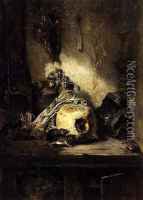Philippe Rousseau Paintings
Philippe Rousseau was a 19th-century French painter known for his detailed still lifes and genre scenes that often incorporated elements of the natural world. Born on April 23, 1816, in Paris, Rousseau became a prominent figure in the Barbizon School, a group of artists who focused on realistic landscape painting and often worked in the Forest of Fontainebleau.
Rousseau received his artistic training at the École des Beaux-Arts in Paris and was influenced by the Dutch still life masters of the 17th century, as well as by French painters such as Jean-Baptiste-Siméon Chardin. He began exhibiting his works at the Paris Salon in 1834, and his attention to detail and ability to capture the texture of surfaces won him considerable acclaim.
Throughout his career, Rousseau developed a reputation for his meticulous and richly textured paintings which frequently featured animals, plants, and inanimate objects arranged in harmonious compositions. His works are characterized by a deep appreciation for the natural world and often include small narratives, with animals acting out human-like scenarios, which added an element of charm to his compositions.
In addition to still lifes, Rousseau occasionally painted portraits and landscapes, but it was his still life work that captured the attention of critics and collectors. He received numerous honors throughout his career, including a first-class medal at the Paris Salon in 1855 and the Legion of Honour in 1867. Rousseau's work was highly sought after during his lifetime, and he enjoyed the patronage of important collectors, including Napoleon III.
Philippe Rousseau died on December 5, 1887, in Acquigny, Eure. Despite his success during his lifetime, after his death, his work fell into relative obscurity. However, Rousseau's paintings can still be found in major museums around the world, including the Louvre in Paris and the Metropolitan Museum of Art in New York. They are celebrated for their technical prowess and their evocative representation of the beauty found in the everyday objects of the natural and domestic world.
